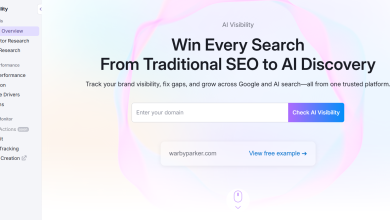
The Paradox at the Center of Search in 2025
In mid-June 2025, Meta finally lifted its long-standing restriction on search terms “cannabis” and “marijuana” across Facebook and Instagram, a change that advocates have been pushing for since 2019. At the same time, Google rolled out AI Overviews to most U.S. users, a shift that may quietly be limiting traffic in ways many businesses haven’t realized yet.
New data from a Pew usage panel shows that when AI summaries appear, users are almost half as likely to click a traditional blue link, just 8% of the time, compared to 15% when no summary is shown. Even more telling: users are significantly more likely to end their search right there on Google.
So while it might look like platforms are becoming more cannabis-friendly, the underlying algorithms may be making it harder than ever to get eyes on your content, especially in regulated industries like ours.
From SEO to GEO: What Changed?
Traditional Search Engine Optimization (SEO) focused on ranking blue links. Generative Engine Optimization (GEO), by contrast, is about earning a citation inside the AI-generated answer box. The catch is that when Google’s AI answers a query fully, people often don’t click through at all – and why would they? Their question has been answered.
This pattern is being called a “zero-click search,” and it means your site gets zero traffic, even if your content helped power the answer. Global research and advisory firm Gartner predicts that by 2026, search volume will drop 25% as users increasingly turn to chatbots and AI agents.
Why Regulated Brands Lose Twice
Large-language-model (LLM) safety systems add a your-money-your-life (YMYL) gate that filters content on health, finance, and controlled substances. For cannabis brands, this means Google’s AI is using safety filters that exclude our content, resulting in a more dramatic drop in search volume.
In other words, even when a dispensary’s site ranks on Page 1 of traditional search, it may not appear at all in the AI-generated summary. That’s a big visibility problem, especially with zero-click searches now happening nearly 80% of the time for AI-triggered queries.
Worst of all, Google isn’t being transparent. While major publishers report steep traffic losses, execs at Google have denied any significant change, suggesting any dip is “just redistribution.” In July, a senior product VP at Google told Mashable, “We don’t really look at specific publishers in that way… we have not observed significant drops in aggregate web traffic.” Cannabis marketers know this playbook well: shadowbans, sudden takedowns, and algorithmic invisibility.
Only now, it’s happening in search instead of social.
The Students for Sensible Drug Policy (SSDP) captured the human cost of this impact in an open letter to Meta: harm-reduction pages and licensed businesses were hidden or suspended without notice on social media. Search is repeating the pattern; only now the censorship is algorithmic, silent, and automated. Cannabis brands cannot appeal a flag or ban they cannot see.
How Cannabis Brands Can Win at GEO
- Author-backed structured data.
Include license numbers, disclaimers, and age gating via schema markup. Show E-E-A-T (Experience, Expertise, Authoritativeness, Trustworthiness) with real contributors, especially those with cannabis-sector credentials. Content that is attributed to businesses with real cannabis‐sector experience and supported by credible citations is far more likely to be quoted inside an AI answer box for regulated topics.
- Go deep, not wide.
AI rewards in-depth, expert-backed content. A 900-word FAQ on “THCV vs THC-A” stands a better chance of citation than a surface-level listicle of “top products.”
- Own your distribution channels.
Use newsletters and RSS feeds; build a strong brand identity that algorithms and customers recognize. The more branded queries you can get in front of, the better your click-through rate and citation odds will be. Studies show that queries containing a known brand name carry higher click-through rates, and language models are more likely to cite sources they already “understand” as credible. In short, the stronger the brand signal, the better your odds of visibility in both SEO and GEO contexts.
- Lean into local signals.
Optimize your Google Business Profile. Add location-based schema. Include license info and local awards to hold ground in “near me” searches, an area where AI Overviews are still lagging.
- Monitor AI answer coverage.
Monitor what triggers AI panels. If you’re missing from the summary, treat it like a lost backlink: refine your content and markup to improve your chances.
From Opaque to Accountable: The Future of Search for Cannabis Brands
While digital platforms are softening their policies for regulated industries, regulators in the U.S. and U.K. are pushing for greater transparency, and ranking algorithms may soon prioritize content authenticity and watermarking. For cannabis and CBD brands, this means moving beyond generic marketing claims. Success now hinges on creating verifiable, first-party content, like lab-backed studies, supply chain transparency, and original documentation.
For example, instead of saying “CBD reduces anxiety,” brands should prove it with clinical research and publish lab reports, sourcing data, or facility walkthroughs. This builds trust with both algorithms and customers.
This approach could involve:
- Original research: Funding studies on their own products’ effects, rather than citing generic industry research
- Supply chain transparency: Publishing detailed information about their farms, extraction methods, and manufacturing processes with verifiable documentation
- Independent verification: Working with third-party labs and universities to validate their claims, then making those partnerships and results publicly available
- Documented processes: Creating content that shows, rather than tells – like video tours of facilities, interviews with growers, or step-by-step documentation of quality control measures
The key shift is from making unsupported marketing claims to building a documented trail of evidence that search algorithms, and more importantly, consumers, can verify and trust.
Marketers and advocacy groups must also push for industry-wide standards (like metadata tags for licensing and age-gating) to ensure compliant operators aren’t excluded by default.
Key takeaways
- Gartner predicts a 25% drop in search volume by 2026 as AI absorbs more queries.
- YMYL industries like cannabis face extra algorithmic filters, limiting visibility.
- The new SEO (GEO) playbook demands trust, transparency, and a collective push for inclusion standards.





